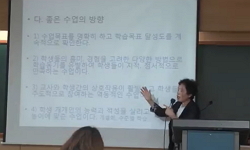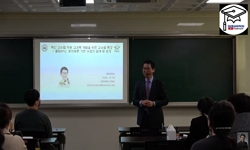The formation of high-level mathematical thinking of students through mathematical classes has long been one of the important goals of mathematics education. Students’ mathematical thinking go beyond simply knowing and remembering facts and skills, ...
http://chineseinput.net/에서 pinyin(병음)방식으로 중국어를 변환할 수 있습니다.
변환된 중국어를 복사하여 사용하시면 됩니다.
- 中文 을 입력하시려면 zhongwen을 입력하시고 space를누르시면됩니다.
- 北京 을 입력하시려면 beijing을 입력하시고 space를 누르시면 됩니다.
https://www.riss.kr/link?id=T15770935
- 저자
-
발행사항
서울 : 성균관대학교 일반대학원, 2021
-
학위논문사항
학위논문(박사) -- 성균관대학교 일반대학원 , 교과교육학과 , 2021. 2
-
발행연도
2021
-
작성언어
한국어
- 주제어
-
발행국(도시)
서울
-
기타서명
Students’ thinking-based math class and lesson design
-
형태사항
ix, 323 p. : 삽화 ; 30 cm
-
일반주기명
지도교수: 한선영
참고문헌: p. 164-173 -
UCI식별코드
I804:11040-000000161088
- DOI식별코드
- 소장기관
-
0
상세조회 -
0
다운로드
부가정보
다국어 초록 (Multilingual Abstract)
The study of Cohen et al.(2003) is the basis of this study. In the study of Cohen et al.(2003), One instructional factor cannot be seen as a simple causal relationship that determines learning outcomes, and the direction and results of class are determined by the dynamic interaction of the content(tasks), students, and teacher in specific situations. Students’ thinking-based math class was considered to be created through the interaction of the three aspects: math tasks, students, and teacher. In addition, through a literature review, it was suggested that rich math tasks, students’ cognitive・social engagement, and the role of a teacher as a formative facilitator are necessary conditions for students’ thinking-based math class. A detailed scene of students’ thinking-based math class was presented by analyzing 15 class videos of five secondary mathematics teachers. Even if a rich math tasks are used through the results of class case analysis, if there is no cognitive and social engagement of the students, it is difficult to use them as an important instructional resource because the mathematical thinking of the students is not revealed concretely in class. In addition, even if the teacher acts as an evaluator or manager rather a formative facilitator, it can be confirmed that students acts as quiet listeners and induce only the student’s behavior that the teacher wants, so that students’ mathematical thinking cannot be meaningfully used.
The students’ thinking-based lesson design template, designed to design lesson by paying attention to the student’s mathematical thinking, was compared with the existing lesson design template in three aspects of mathematics tasks, students engagement, and teacher role, and the differences were confirmed. The mathematical tasks identified in the lesson design included important mathematics concepts, but often did not have an appropriate entry point or required a set of answer and procedure. This acted as an obstacle to planning various mathematical thinking of students and teachers’ educational responses to them, despite structural differences between the student’s thinking-based lesson design template and the existing design template. In the case of including the features of rich mathematics tasks, the structural characteristics of the student’s thinking-based lesson design helped pre-service teacher to give limited attention to the cognitive and social engagement of students and the role of the teacher as a formative facilitator in the classes planned.
The results of this study are meaningful in that they emphasize the importance of mathematics classes in which various students’ thinking is used as meaningful resources for classes, and they were embodied through actual class scenes. It is also significant that this study proposed a students’ thinking-based lesson design template as a tool to support lesson design that focused on student’s thinking. However, in the future, research on the relationship between teachers, students, and tasks, focusing on the case of class identified as students’ thinking-based math classes, and studies on specific professional development programs for student’s thinking-based math classes, should be continued in the future study.
The formation of high-level mathematical thinking of students through mathematical classes has long been one of the important goals of mathematics education. Students’ mathematical thinking go beyond simply knowing and remembering facts and skills, and are formed by engagement in a communication process that criticizes and reflects on various mathematical ideas. However, teachers’ perceptions of students engagement differ from each other in student-centered or student-participatory class in the school fields, and most of them are understand only as outward activities such as presentations or small group activities, so students’ mathematical thinking is not used as an important instructional resource in math classes. Therefore, in this study, a student-participatory class that support students’ solid understanding by taking meaningful mathematical thinking of students as an important issues of class is called students’ thinking-based math class. And I tried to reveal important features that can confirm that its is a students’ thinking-based math class. In addition, I focused on lesson design as a way to support the practice of math class based on students’ thinking, and tried to examine the changes made by the lesson design based on students’ thinking that complemented the existing lesson design.
The study of Cohen et al.(2003) is the basis of this study. In the study of Cohen et al.(2003), One instructional factor cannot be seen as a simple causal relationship that determines learning outcomes, and the direction and results of class are determined by the dynamic interaction of the content(tasks), students, and teacher in specific situations. Students’ thinking-based math class was considered to be created through the interaction of the three aspects: math tasks, students, and teacher. In addition, through a literature review, it was suggested that rich math tasks, students’ cognitive・social engagement, and the role of a teacher as a formative facilitator are necessary conditions for students’ thinking-based math class. A detailed scene of students’ thinking-based math class was presented by analyzing 15 class videos of five secondary mathematics teachers. Even if a rich math tasks are used through the results of class case analysis, if there is no cognitive and social engagement of the students, it is difficult to use them as an important instructional resource because the mathematical thinking of the students is not revealed concretely in class. In addition, even if the teacher acts as an evaluator or manager rather a formative facilitator, it can be confirmed that students acts as quiet listeners and induce only the student’s behavior that the teacher wants, so that students’ mathematical thinking cannot be meaningfully used.
The students’ thinking-based lesson design template, designed to design lesson by paying attention to the student’s mathematical thinking, was compared with the existing lesson design template in three aspects of mathematics tasks, students engagement, and teacher role, and the differences were confirmed. The mathematical tasks identified in the lesson design included important mathematics concepts, but often did not have an appropriate entry point or required a set of answer and procedure. This acted as an obstacle to planning various mathematical thinking of students and teachers’ educational responses to them, despite structural differences between the student’s thinking-based lesson design template and the existing design template. In the case of including the features of rich mathematics tasks, the structural characteristics of the student’s thinking-based lesson design helped pre-service teacher to give limited attention to the cognitive and social engagement of students and the role of the teacher as a formative facilitator in the classes planned.
The results of this study are meaningful in that they emphasize the importance of mathematics classes in which various students’ thinking is used as meaningful resources for classes, and they were embodied through actual class scenes. It is also significant that this study proposed a students’ thinking-based lesson design template as a tool to support lesson design that focused on student’s thinking. However, in the future, research on the relationship between teachers, students, and tasks, focusing on the case of class identified as students’ thinking-based math classes, and studies on specific professional development programs for student’s thinking-based math classes, should be continued in the future study.
국문 초록 (Abstract)
본 연구는 하나의 수업 요인이 학습 성과를 결정짓는 단순한 인과 관계가 아니라 주어진 상황 속에서 내용, 학생, 그리고 교사의 역동적인 상호작용으로 인해 수업의 방향과 결과가 결정된다는 Cohen et al.(2003)의 연구를 토대로 하고 있다. 학생 사고기반 수학 수업은 과제, 학생, 교사의 세 가지 측면이 상호작용하면서 만들어진다고 보았으며, 문헌 검토를 통해 풍부한 수학 과제, 학생의 인지적・사회적 참여, 그리고 형성적 조력자로의 교사 역할이 학생 사고기반 수학 수업의 필요조건임을 제시하였다. 또한, 중등수학 교사 5명의 수업 영상 13편을 분석하여 학생 사고기반 수학 수업의 구체적인 장면을 제시하였다. 수업 사례 분석 결과를 통해 풍부한 수학 과제를 사용했더라도 학생의 인지적・사회적 참여가 없다면 학생의 수학적 사고가 수업에서 구체적으로 드러나지 않아 중요한 수업 자원으로 활용되기 어려우며, 교사가 형성적 조력자가 아닌 평가자나 관리자로 행동한다면 학생들은 조용한 청자로서 교사가 원하는 행동만을 하므로 학생의 수학적 사고를 의미 있게 이용할 수 없음을 확인할 수 있었다.
학생의 수학적 사고에 주목하여 수업을 설계하도록 고안된 학생 사고기반 수업 설계안은 수학 과제, 학생의 참여, 그리고 교사 역할의 세 가지 측면에서 기존의 수업 설계안과 비교하여 그 차이점을 확인하였다. 수업 설계안에서 확인된 수학 과제는 중요한 수학 개념을 포함했지만, 적절한 진입점을 갖지 못했거나 정해진 답과 절차를 요구하는 경우가 많았다. 이것은 학생 사고기반 수업 설계안과 기존 설계안이 가지는 구조적 차이에도 불구하고 학생의 다양한 수학적 사고와 그에 대한 교사의 교육적 대응법을 계획하는 데 걸림돌로 작용했다. 풍부한 수학 과제의 특징을 포함한 경우에는 학생 사고기반 수업 설계안이 가진 구조적 특징으로 인해 예비교사들이 계획하는 수업에서 제한적으로 학생의 인지적・사회적 참여와 형성적 조력자로서의 교사 역할에 주의를 기울일 수 있도록 도왔음을 확인하였다.
본 연구는 학생의 수학적 사고가 수업의 중요한 자원으로 활용되는 수학 수업의 중요성을 강조하여 실제 수업 장면을 통해 구체화했다는 점, 그리고 학생의 수학적 사고에 주목하여 수업을 설계할 수 있도록 돕는 도구로 새로운 설계안을 제안했다는 점에서 의미가 있다. 앞으로 학생 사고기반 수학 수업으로 확인된 수업 사례를 중심으로 교사와 학생, 그리고 과제의 상호작용에 관한 추가적인 연구와 학생 사고기반 수학 수업을 위한 구체적인 전문성 프로그램 개발 및 효과에 관한 연구가 계속되어야 할 것이다.
수학 수업을 통한 학생들의 높은 수준의 수학적 사고력 함양은 오랫동안 수학교육의 중요한 목표 중 하나였다. 학생들의 수학적 사고력은 단순히 사실과 기능을 알고 기억하는 것을 넘어서 ...
수학 수업을 통한 학생들의 높은 수준의 수학적 사고력 함양은 오랫동안 수학교육의 중요한 목표 중 하나였다. 학생들의 수학적 사고력은 단순히 사실과 기능을 알고 기억하는 것을 넘어서 다양한 수학적 아이디어를 비판하고 반성하는 의사소통과정에 참여함으로써 형성된다. 그러나 학생 중심 또는 학생 참여형 수업에서 학생의 참여에 대한 학교 현장 교사들의 인식이 서로 다르며, 대부분 발표나 모둠 활동과 같은 외현적 활동 자체로만 이해됨으로써 수학 수업에서 학생의 수학적 사고를 중요한 수업 자원으로 활용하지 못하고 있다. 본 연구는 학생의 의미 있는 수학적 사고를 수업의 중요한 주제로 삼아 학생들의 견고한 이해를 지원하는 참여형 수업을 학생 사고기반 수학 수업이라 하였다. 그리고 학생 사고기반 수학 수업임을 확인할 수 있는 중요한 특징들을 밝히고자 하였다. 또한, 학생 사고기반 수학 수업 실천을 지원하는 한 가지 방법으로 수업 설계에 주목했으며 기존의 수업 설계안을 보완한 학생 사고기반 수업 설계안이 만들어내는 변화를 살펴보고자 했다.
본 연구는 하나의 수업 요인이 학습 성과를 결정짓는 단순한 인과 관계가 아니라 주어진 상황 속에서 내용, 학생, 그리고 교사의 역동적인 상호작용으로 인해 수업의 방향과 결과가 결정된다는 Cohen et al.(2003)의 연구를 토대로 하고 있다. 학생 사고기반 수학 수업은 과제, 학생, 교사의 세 가지 측면이 상호작용하면서 만들어진다고 보았으며, 문헌 검토를 통해 풍부한 수학 과제, 학생의 인지적・사회적 참여, 그리고 형성적 조력자로의 교사 역할이 학생 사고기반 수학 수업의 필요조건임을 제시하였다. 또한, 중등수학 교사 5명의 수업 영상 13편을 분석하여 학생 사고기반 수학 수업의 구체적인 장면을 제시하였다. 수업 사례 분석 결과를 통해 풍부한 수학 과제를 사용했더라도 학생의 인지적・사회적 참여가 없다면 학생의 수학적 사고가 수업에서 구체적으로 드러나지 않아 중요한 수업 자원으로 활용되기 어려우며, 교사가 형성적 조력자가 아닌 평가자나 관리자로 행동한다면 학생들은 조용한 청자로서 교사가 원하는 행동만을 하므로 학생의 수학적 사고를 의미 있게 이용할 수 없음을 확인할 수 있었다.
학생의 수학적 사고에 주목하여 수업을 설계하도록 고안된 학생 사고기반 수업 설계안은 수학 과제, 학생의 참여, 그리고 교사 역할의 세 가지 측면에서 기존의 수업 설계안과 비교하여 그 차이점을 확인하였다. 수업 설계안에서 확인된 수학 과제는 중요한 수학 개념을 포함했지만, 적절한 진입점을 갖지 못했거나 정해진 답과 절차를 요구하는 경우가 많았다. 이것은 학생 사고기반 수업 설계안과 기존 설계안이 가지는 구조적 차이에도 불구하고 학생의 다양한 수학적 사고와 그에 대한 교사의 교육적 대응법을 계획하는 데 걸림돌로 작용했다. 풍부한 수학 과제의 특징을 포함한 경우에는 학생 사고기반 수업 설계안이 가진 구조적 특징으로 인해 예비교사들이 계획하는 수업에서 제한적으로 학생의 인지적・사회적 참여와 형성적 조력자로서의 교사 역할에 주의를 기울일 수 있도록 도왔음을 확인하였다.
본 연구는 학생의 수학적 사고가 수업의 중요한 자원으로 활용되는 수학 수업의 중요성을 강조하여 실제 수업 장면을 통해 구체화했다는 점, 그리고 학생의 수학적 사고에 주목하여 수업을 설계할 수 있도록 돕는 도구로 새로운 설계안을 제안했다는 점에서 의미가 있다. 앞으로 학생 사고기반 수학 수업으로 확인된 수업 사례를 중심으로 교사와 학생, 그리고 과제의 상호작용에 관한 추가적인 연구와 학생 사고기반 수학 수업을 위한 구체적인 전문성 프로그램 개발 및 효과에 관한 연구가 계속되어야 할 것이다.
목차 (Table of Contents)
- Ⅰ. 서 론 1
- 1. 연구의 필요성 및 목적 1
- 2. 수학교육 연구 동향 7
- 3. 연구 질문과 각 장의 개요 11
- 가. 연구 질문 11
- Ⅰ. 서 론 1
- 1. 연구의 필요성 및 목적 1
- 2. 수학교육 연구 동향 7
- 3. 연구 질문과 각 장의 개요 11
- 가. 연구 질문 11
- 나. 각 장의 개요 12
- Ⅱ. 학생 사고기반 수학 수업의 특징과 그 실제 13
- 1. 이론적 배경 13
- 가. 학생 참여형 수업 13
- 나. 수학 수업의 구성 요소 17
- 2. 연구방법 21
- 가. 문헌 연구 21
- 나. 수업 사례 분석 23
- 3. 연구 결과 1: 학생 사고기반 수학 수업의 특징 28
- 가. 수학적 사고와 수학 수업 28
- 나. 학생 사고기반 수학 수업의 세 가지 요소별 특징 29
- 4. 연구결과 2: 수업 사례 분석 42
- 가. 사례 1: IRE 패턴에 따르는 활동 중심의 수업 43
- 나. 사례 2: 예측 불가능한 학생의 수학적 사고를 주제로 하는 학생 사고기반 수학 수업 48
- 다. 사례 3: 수학적 역량이 우수한 학생이 가르치는 수업 64
- 라. 사례 4: IRE 패턴에 따르는 설명 중심의 수업 70
- 5. 결론 77
- Ⅲ. 학생 사고기반 수학 수업을 위한 수업 설계 84
- 1. 이론적 배경 84
- 가. 수업 설계 84
- 나. 수업 관행(practice) 95
- 2. 연구방법 96
- 가. 연구 대상 및 자료 수집 96
- 나. 자료 분석 방법 98
- 3. 학생 사고기반 수업 설계안 105
- 4. 연구 결과 및 논의 108
- 가. 수학 과제 108
- 나. 학생의 참여 114
- 다. 교사의 역할 129
- 5. 결론 148
- Ⅳ. 결론 및 제언 153
- 1. 결론 153
- 2. 제언 159
- 참 고 문 헌 164
- 부 록 174
- ABSTRACT 321












